|
|
| Line 138: |
Line 138: |
| | | 2 | | | 2 |
| | |} | | |} |
| | + | |
| | + | [[Category:Infrastructure]] |
| | + | [[Category:Railways]] |
| | + | [[Category:Junctions]] |
Revision as of 08:41, 23 October 2017
All the exaples below have the basic signaling shown on the images, better signalling positions can improve their preformance if nessesary.
Y Junctions
Y-Junctions act as a convergence or divergence points between two routes on a railway line. Simple solutions tend to work well, but tend to have significant drawbacks when used at high capacity.
| Image
|
Name
|
Information
|
Signalling Complexity
|
No. of Points
|
No. of Crossings
|
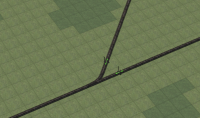
|
Single Track Junction
|
The most basic junction possible in the game
|
Low
|
1
|
0
|

|
Single Track Junction with passing loop
|
A more advanced junction with space to allow trains to pass.
|
Medium
|
3
|
0
|
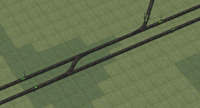
|
Branchline with Ladder Junction
|
A basic junction from double track to a 2 way single track line. Only one locomotive can use the Branchline
|
Low
|
3
|
1
|
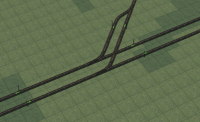
|
Branchline with double track entrance
|
A advance junction from double track to a 2 way single track line. Multiple trains can use the branchline.
|
Low
|
3
|
1
|
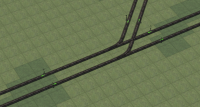
|
Mainline Split
|
A basic junction for splitting a double track mainline into two directions. Flow is restricted to 1 train accross the junction even if two trains accessing the junction do not cross each others paths.
|
Low
|
2
|
1
|
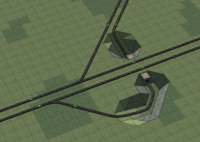
|
Mainline Continuous Flow Junction
|
A advanced mainline junction which poses no restriction on the flow of trains.
|
Low
|
2
|
0
|
Crossings
These are for locations on the tracks where two lines must cross over each other, with no tracked connection between the two.
| Image
|
Name
|
Information
|
Signalling Complexity
|
No. of Points
|
No. of Crossings
|
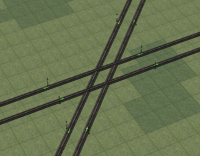
|
Crossing on the Level
|
A simple method for two mainlines to cross, Flow is restricted to 1 train accross the junction even if two trains accessing the junction do not cross each others paths.
|
Low
|
0
|
4
|

|
Overpass
|
Using bridges to cross other tracks, top line must be perpendicular to the grid, lower lines can be in any orientation. Minimum hight difference of 3 between the two lines.
|
None
|
0
|
0
|
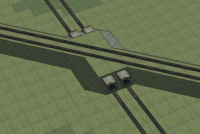
|
Underpass
|
Using Tunnels to cross under other tracks, bottom line must be perpendicular to the grid, top lines may be in any orientation. Minimum hight difference of 3 between the two lines.
|
None
|
0
|
0
|
Terminus Junctions
These are a selection of junctions that go at the end of a railway line, these are deigned for both high capacity and the ability to turn the trains arround to prevent the locomotives from reversing on their return journey.
| Image
|
Name
|
Information
|
Signalling Complexity
|
No. of Points
|
No. of Crossings
|
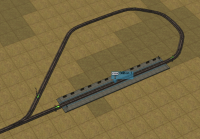
|
Return Loop
|
A simple method of turning around trains at the end of the line.
|
Low
|
1
|
0
|
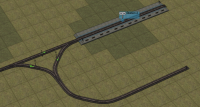
|
Turning Triangle
|
An alternative method of turning around trains at the end of the line.
|
Medium
|
3
|
0
|

|
Roundabout
|
An advanced version of the return loop, this version allows multiple lines to feed into a single station. One way signals must be used to allow for continuous flow.
|
High
|
3 x n
|
0
|
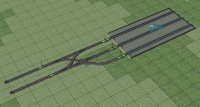
|
Main Terminus
|
A high capacity railway station that works with a continuous supply of trains. There is no reversing facilities, therefore best used when reversing trains are disabled.
|
Medium
|
7
|
2
|
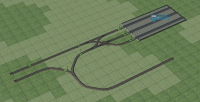
|
Main Terminus with Turning Triangle
|
A variation of the Terminus station with reversing facilities
|
High
|
8
|
2
|
 Railways
Railways
 Roadways
Roadways Airports
Airports Landscaping
Landscaping Electrification
Electrification












